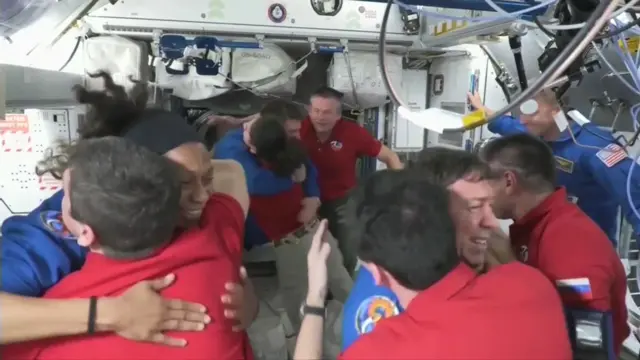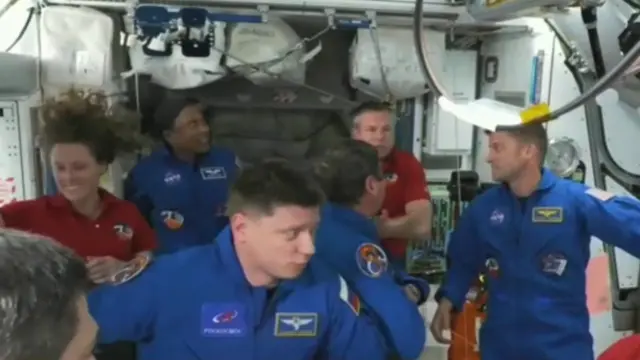Thank you for joining uspublished at 09:39 GMT 5 March 2024
 Jack Burgess
Jack Burgess
Live reporter
Well that wraps up an out-of-this-world morning. A SpaceX crew of three US astronauts and one Russian cosmonaut have arrived safely at the International Space Station (ISS), where they will be staying for six months.
Before we go, here's a quick summary of what's been happening:
- The Dragon Endeavour spacecraft has docked at the ISS - a research lab above Earth - and its hatch has opened successfully after the mission set off from Florida
- Missions such as this one are a regular occurrence, as crews are rotated every few months, but it remains no small endeavour as docking two ports the size of a manhole is not a straightforward matter
- During their mission, US astronauts Matthew Dominick, Michael Barratt and Jeanette Epps, and Russian cosmonaut Alexander Grebenkin will carry out as many as 200 science experiments
- In the context of worsening geo-political tensions, space is one of the few areas where the US and Russia continue to co-operate closely - despite the war in Ukraine
- The newcomers were warmly welcomed by a seven-person crew currently at the space station, which sits some 250 miles (402km) above the Earth
This page was written by Malu Cursino and Gabriela Pomeroy. It was edited by Jack Burgess and Nathan Williams.




